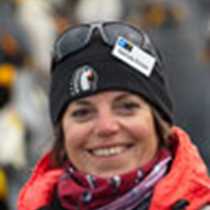In the early hours of the morning, we saw land silhouetted behind a curtain of mist and clouds on the horizon. It was Cape Horn, the legendary landmark that witnessed many shipwrecks in past times. This was the end of the South American continent, and for us, it was the last day of our voyage. The mythical lighthouse shone its light. With binoculars, we could see the lighthouse keeper’s accommodation, and farther away, the monument to the albatross.
As we sailed northeast towards the Beagle Channel, landforms appeared closer and greener than ever before; this was the first time in more than three weeks that we could see trees. The native Nothofagus (southern beech trees), tussock grass, and shrubs seemed like a novelty after our ice encounters.
The Beagle Channel is a large body of water that runs in a practically horizontal stretch at the end of the Large Island/Isla Grande of Tierra del Fuego. It is also an international boundary between Argentina and Chile with only two urban settlements. Puerto Williams is on the southern coast of the channel, and Ushuaia, our last port of call, is on the northern coast. To guide us, an Argentine pilot joined the ship, with the boat approaching National Geographic Endurance on the starboard side while in motion.
The Beagle is also home to many seabird species, and we were delighted to watch black browed-albatrosses, giant petrels, South American terns, cormorants, and Magellanic penguins.
It will soon be time to say farewell to our voyage. We have spent the second month of 2023 together, creating memories and friendships that will last a lifetime. Farewell, Antarctica. We will meet again.







